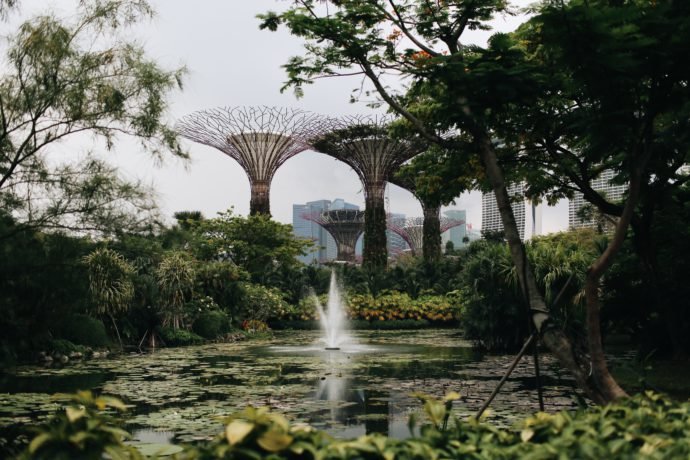integrate cities with nature to fight climate change now

Concrete jungle’ is a word we’re all too familiar with nowadays and the places we inhabit fit the bill a little too well. Cities are filled with buildings to the hilt and next-to-nil spaces like parks where people can interact with nature are easily the norm are vanishing rapidly.
Many Indian cities fall way below the United Nations recommended standard of 9 m2 of green space per person, including Mumbai (1.24 m2/person) and Chennai (0.81 m2/person). Even Bangalore, known as the ‘Garden City’ is a poor performer with only 1.9 m2 of green space per person.
Source – https://cere-india.org/greening-our-concrete-jungles/ )
Cities are more vulnerable to climate change due to shrinking green spaces and rampant urbanisation. Combine this with rising greenhouse gas emissions (or GHGs) like carbon dioxide, and cities worldwide are boiling. It is essential now more than ever to understand the importance of living alongside nature.
Urbanization is Inevitable
It is not only a deterrent to the climate crisis but it also serves as a balm in people’s lives. From walks in city parks to the days spent hiking in the wilderness, exposure to nature has been linked to a host of benefits, including improved attention, lower stress, better mood, reduced risk of psychiatric disorders and even upticks in empathy and cooperation.
Many argue that urbanisation is inevitable because it is a basic requisite for human development. But one of the most important aspects of rearticulating human development is to emphasize the need for fairness to nature and other living beings. We cannot develop fully until our lives become intertwined with nature in harmony, cooperation and balance.
Anne Whiston Spirn, professor of landscape architecture and planning says that cities should exist in harmony with nature. Their survival depends on it.
She says, “If cities are designed in concert with natural processes,.They will be less vulnerable to air and water pollution, flooding, droughts, fires, and earthquakes.”
It might seem like a daunting task; with the feeling that it’s too late to change our cities but that is really not the case. After all, better late than never, right?
( Image Source – https://in.pinterest.com/pin/541769030152272536/ )
Case Study of Irvine
The City of Irvine in California, USA is a good example. It began as a master-planned community with the conscious intent to create a city of the future, now with 280,000 residents. Early on, Irvine Company looked at its vast property holdings in a way that went beyond the usual short-sighted perspective – to create an ideal place to live within the context of a natural environment.
It began to set aside land right from the start but upped the proposed share of open space from 11% in 1960 to 60% today.
Irvine Company Chairman Donald Bren talking to Irvine Standard said that “As a result, over half of the entire Irvine Ranch is now protected open space forever,”
“Right here, in the heart of Orange County, is the largest urban open space in the United States … 57,500 acres … with easy access for more than 3 million people,” added Bren.
It enjoys high appeal among potential residents and 90% of its residents ranked their quality of life as ‘excellent’ or ‘good’. Irvine turned out to be the most fiscally sound and safest city in the country but it may well be among the most sustainable, with a legacy that will persist the sands of time. London is also changing its environmental policies and making way for more greener spaces, for its inhabitants.
Year after year, studies have shown that living amongst nature is highly beneficial for humans.
So, we should be asking why don’t we all try to make a conscious effort to push for more green spaces around us, not just for us but for the generations that come after.

Nice article and noble thoughts. But it is equally true that Indian politics takes green city concept to new level. Massive infra projects funded by foreign agencies are held up on ransom sighting false green covers. For example arterial metro project in mumbai is one of the many such victimised projects. There is no green cover around. It is underground railway. Badly needed for commuters and held up for years on pretext of environment issues.